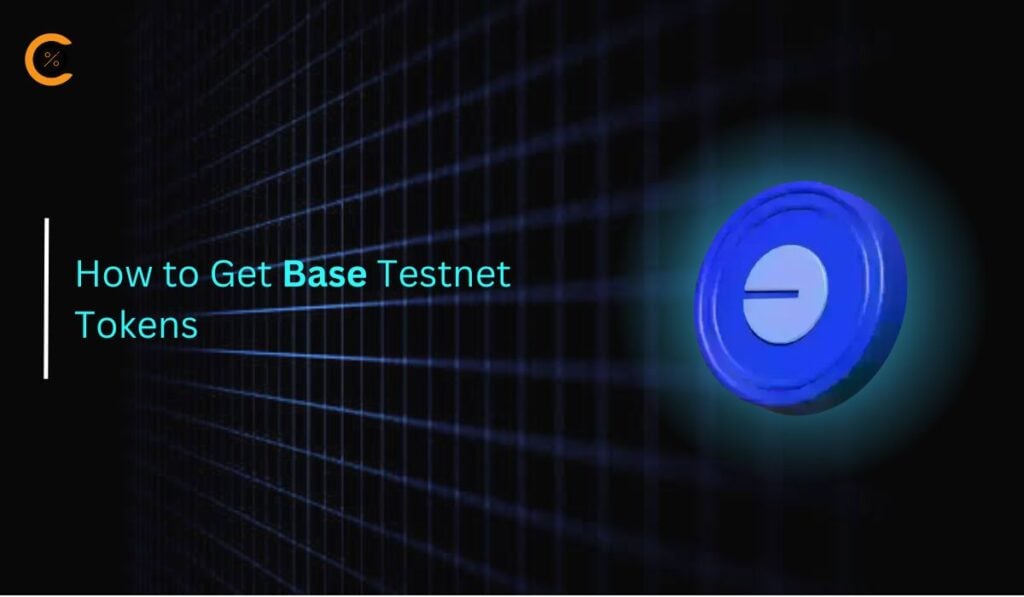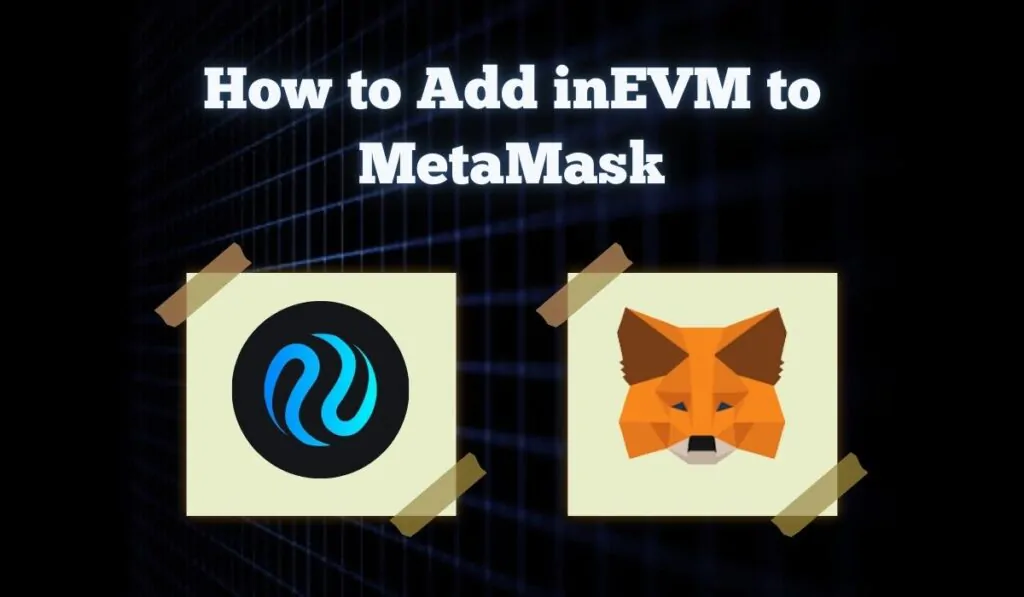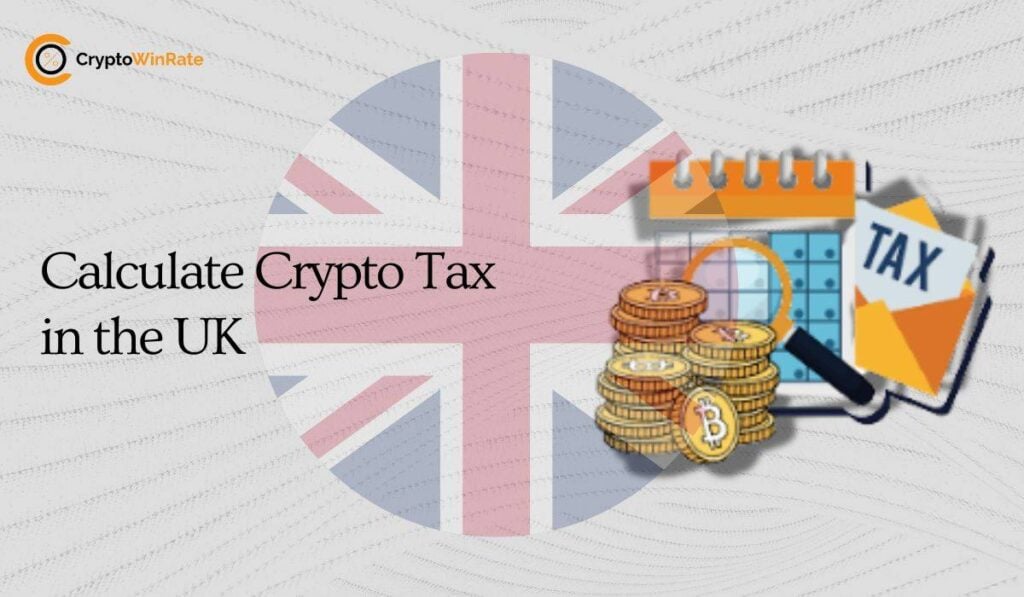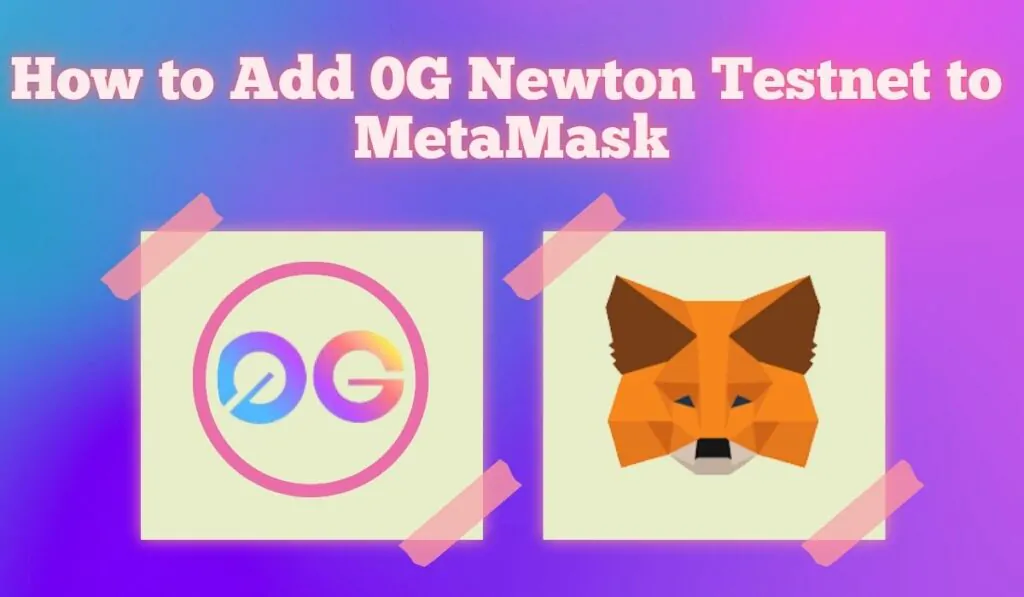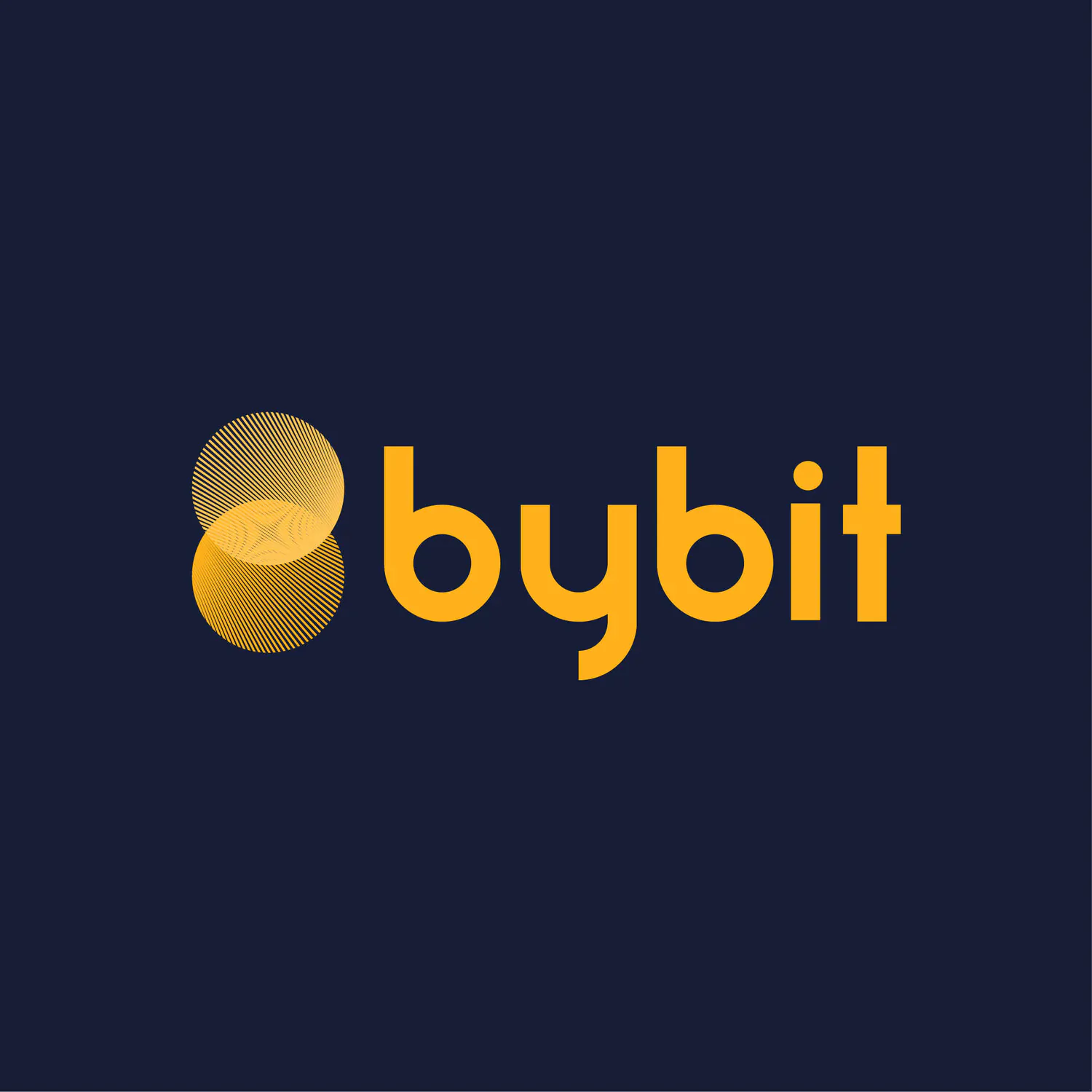Crypto blockchains offer testnet tokens for risk-free network exploration and dApp development. These testnet tokens are similar to actual crypto assets but have no monetary value. Base Sepolia testnet ETH facilitates transactions without real funds. The main question now is how do you get the required Base testnet tokens? This article explains how to obtain Base testnet tokens via faucets and their potential drawbacks.
Can I Get Base Testnet Tokens?
Yes, developers and regular blockchain testers can acquire Base testnet tokens for free. To get Base testnet tokens, you need a Base-compatible Web3 wallet and a fast and reliable Base testnet faucet. Since Base is an Ethereum-based network, Metamask and Coinbase are ideal wallets to use when getting Base testnet tokens. Next, visit a trusted faucet recommended by the Base community to claim your tokens.
Steps to Get Base Testnet Tokens
Once you’ve selected and prepared your EVM-compatible wallet (preferably, Coinbase Wallet), you’re one step closer to getting Base testnet tokens. In this section, we’ll provide easy steps to get Base testnet tokens from available faucets. Note that a Faucet is a reliable service that offers free testnet tokens. Follow the steps below to get free Base testnet tokens today:
1. Official Base Faucet
The official Base Faucet is the primary source for Base tokens. It is a fast, secure, and reliable faucet for getting free Base Sepolia testnet tokens. Here’s a step-by-step guide to use the official Base Faucet:
Step 1: Visit the official Base Sepolia Faucet via your preferred web browser.
Step 2: Open your Coinbase wallet, switch to testnet, and copy the wallet address.
Step 3: Input the address in the official Base faucet platform.
Step 4: Submit the request to receive testnet ETH tokens. You should see the tokens in your wallet immediately after completing the process. Refresh your wallet to confirm the deposited tokens.
Official Base Faucet Limitations
The official Base testnet faucet (Coinbase Developer Platform Faucet) has some limitations in preventing token abuse. Firstly, requests are limited to one claim daily. You can receive up to 0.5 testnet ETH every 24 hours.
Also, you must have a Coinbase Wallet account to use the official Base faucet. While this might be a drawback for those who prefer other wallets for privacy or security reasons, Coinbase Wallet users can easily claim testnet tokens through this service.
2. Quicknode Base Sepolia Faucet
Step 1: Head to the Quicknode Base Faucet website.
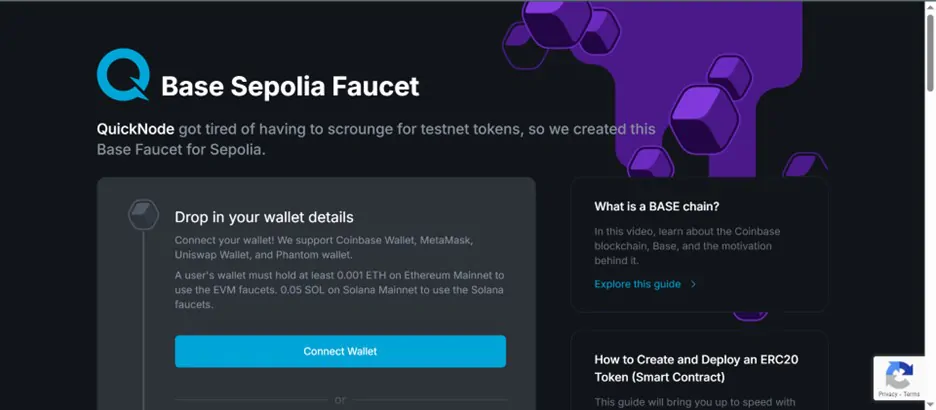
Step 2: Link your Coinbase Wallet or any EVM-compatible wallet you want to store Base testnet tokens.
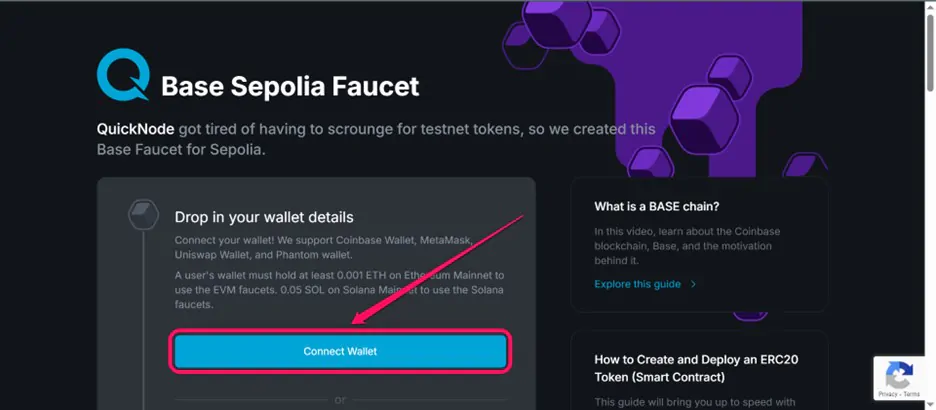
Step 3: Select Base as the network for the testnet tokens.
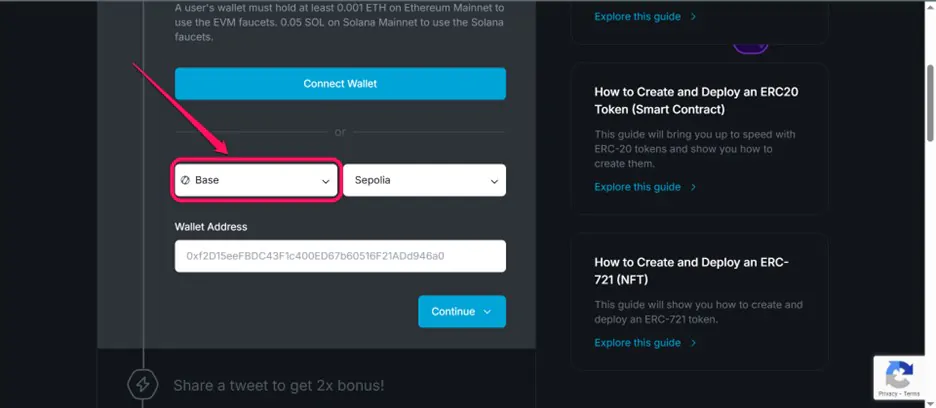
Step 4: Click Continue to proceed. You can also tweet about Quicknode for extra tokens.

Step 5: Approve the transaction. You should receive your tokens within minutes.
Quicknode Base Sepolia Limitations
On the Quicknode Base Faucet, you can only get about 0.01 ETH every 4 hours. Your wallet must also hold at least 0.001 ETH on Ethereum Mainnet to use the EVM faucets. Tokens got through Quicknode Base Sepolia Faucet also take longer to appear on your wallet than the official Base Sepolia Faucet.
Other Faucets – Are They Worth It?
Several other Base faucets available online have unique benefits and limitations. So, determining their worth depends on your needs and experience. On one hand, you can acquire tokens from several tokens at a time to increase your testnet tokens.
You can get additional Base testnet tokens from Alchemy, Chainlink Base Faucet, Automata L2 Faucet, etc., if you’re unsatisfied with the ones from the official faucet. However, always verify the legitimacy and limitations of faucets before using them. Never share your private keys and other personal info on a faucet.
About Base
Base is a secure, low-cost Ethereum Layer 2, designed to scale dApps with minimal fees and seamless EVM compatibility. Base network was powered by Coinbase and built on OP Stack in conjunction with Optimism. It allows developers to deploy smart contracts without code changes, bridge tokens, develop and explore dApps, and transact at lower fees than Ethereum. The Base network is decentralized and allows seamless fiat onramps, multiple product integrations, powerful user acquisition tools, etc.
Bottom Line
Getting Base testnet tokens to explore decentralized applications (dApps) and test features on the L2 network is straightforward. This access to Base’s low-cost, scalable environment is perfect for experimenting with smart contracts on Ethereum. This article provided the best steps to get Base Sepolia testnet assets from the official Base faucet. If you encounter issues regarding the official Base faucet platform limitations, follow the steps to acquire testnet tokens from Quicknode Base faucet or other alternatives.
FAQs
1. What should I do if the official Base faucet isn’t working?
Ensure you’re using a compatible wallet and if the faucet isn’t having a downtime. You can also select alternative faucets, as highlighted in this post.
2. How often can I request tokens from a Base faucet?
It varies by faucets; some allow one-per-day requests while others have different intervals. Check the faucet’s request limits before making a testnet request.
3. How can I add Base Sepolia testnet to Metamask?
Open the Metamask app or extension, click the network selector, then select Add Network, and manually choose Add a network to input the required details, including the RPC URL, Chain ID, and Currency Symbol.
4. What is the Base Goerli testnet?
Base Goerli is, along with Base Sepolia, the two testnets of the Base ecosystem. It is a web-based application that allows developers to test Base Web3 projects and protocol upgrades.
5. Does Base have a native token?
No, Base does not have its own native token. Instead, it uses ETH for transaction fees and other network operations.

